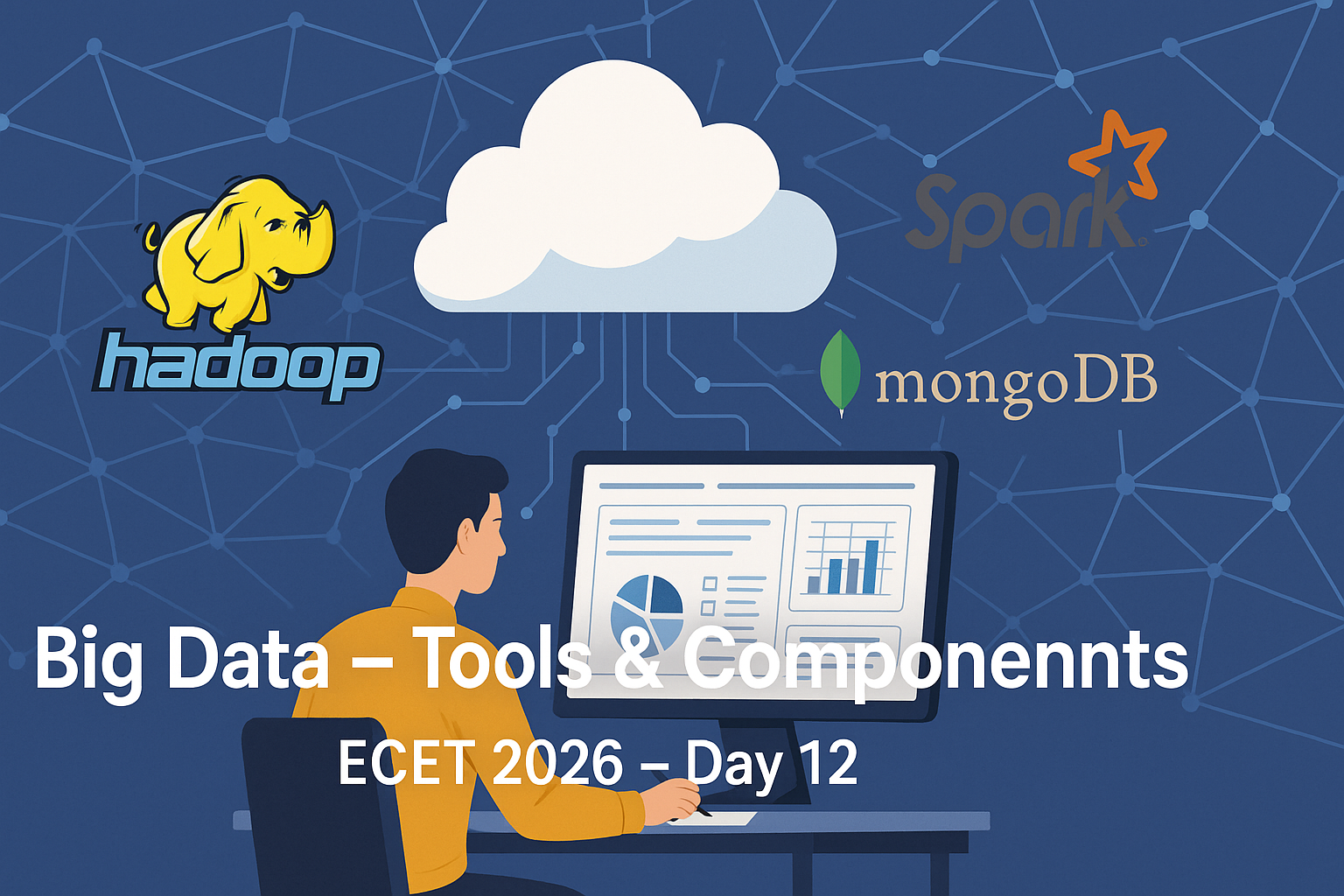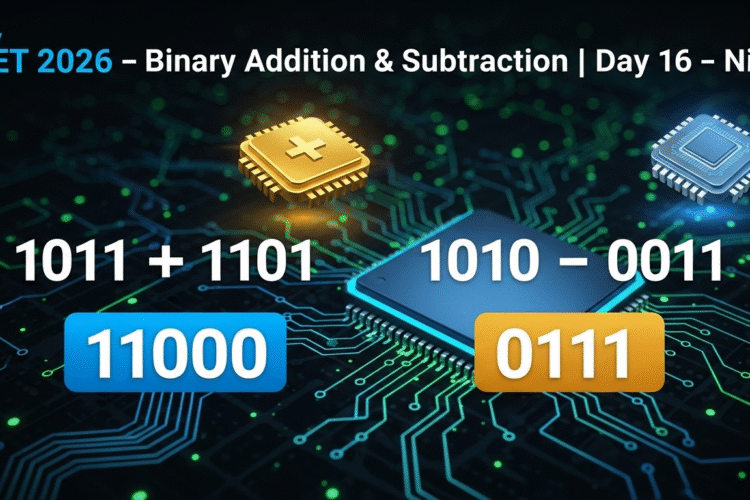
Concept Notes: Big Data – Components & Tools
🔹 1. What is Big Data?
Big Data refers to extremely large datasets that are complex and grow rapidly, making them difficult to process using traditional tools.
🔹 2. The 5 V’s of Big Data
| V | Meaning |
|---|---|
| Volume | Massive amount of data (TBs to PBs) |
| Velocity | Speed of incoming data (real-time/streaming) |
| Variety | Structured, semi-structured, unstructured data |
| Veracity | Data accuracy and trustworthiness |
| Value | Useful insights drawn from big data |
🔹 3. Big Data Architecture
Key Layers:
- Data Sources: IoT devices, web, social media, sensors
- Ingestion Layer: Apache Kafka, Flume – gathers incoming data
- Storage Layer: Hadoop HDFS, NoSQL (MongoDB)
- Processing Layer: Apache Spark, MapReduce
- Visualization Layer: Power BI, Tableau, Kibana
🔹 4. Major Tools in Big Data Ecosystem
| Tool | Use |
|---|---|
| Hadoop | Open-source framework for big data storage & processing (HDFS + MapReduce) |
| Apache Spark | Fast, in-memory data processing engine |
| Kafka | Real-time data streaming platform |
| Hive | SQL-like queries on Hadoop |
| Pig | Scripting platform for data analysis |
| MongoDB | NoSQL database for semi-structured data |
| HBase | Column-based NoSQL database |
| Tableau / Power BI | Data visualization tools |
🔹 5. Use Cases of Big Data
- Recommender systems (Netflix, Amazon)
- Fraud detection in banks
- Real-time traffic & weather data analysis
- Smart healthcare monitoring
- Social media analytics
🔹 6. Challenges of Big Data
- Data Security & Privacy
- Data Integration from multiple formats
- High Infrastructure Costs
- Skilled Workforce requirement
🔹 7. Real-Life Example
Google collects trillions of data points daily from search, ads, Gmail, etc. It uses Big Data tools like TensorFlow, BigQuery, and MapReduce to process that.
🧠 10 MCQs – Big Data Tools & Concepts
1️⃣ What is the full form of HDFS?
A) Hadoop Distributed File System
B) High Data File Storage
C) Hybrid DFS
D) Hadoop Dynamic Framework System
2️⃣ Which component handles real-time data streaming?
A) HDFS
B) Kafka
C) Hive
D) Hadoop
3️⃣ What is the main purpose of Apache Spark?
A) Store unstructured data
B) Visualize charts
C) Real-time fast data processing
D) Create APIs
4️⃣ Which of the following is a NoSQL database?
A) MySQL
B) Hive
C) MongoDB
D) Excel
5️⃣ What is the key feature of Big Data velocity?
A) Accuracy
B) High speed of data input
C) Low cost
D) Graph visualization
6️⃣ Hive is used to:
A) Monitor servers
B) Query data using SQL-like syntax
C) Send emails
D) Backup cloud data
7️⃣ Hadoop includes:
A) Spark & Tableau
B) MongoDB & NoSQL
C) HDFS & MapReduce
D) Kafka & Redis
8️⃣ Which layer stores raw data in Big Data?
A) Ingestion
B) Processing
C) Storage
D) Visualization
9️⃣ Tableau and Power BI are used for:
A) Code development
B) Security analysis
C) Data visualization
D) File compression
🔟 Which one is not a V of Big Data?
A) Volume
B) Velocity
C) Viscosity
D) Veracity
✅ Answer Key
| Q.No | Answer |
|---|---|
| 1 | A |
| 2 | B |
| 3 | C |
| 4 | C |
| 5 | B |
| 6 | B |
| 7 | C |
| 8 | C |
| 9 | C |
| 10 | C |
📖 Explanations
- Q1: HDFS = Hadoop Distributed File System
- Q2: Kafka handles real-time streaming
- Q3: Spark is known for in-memory fast processing
- Q4: MongoDB is a document-based NoSQL DB
- Q5: Velocity = data speed
- Q6: Hive lets you query large datasets like SQL
- Q7: Hadoop core = HDFS + MapReduce
- Q8: Storage layer holds data in HDFS or NoSQL
- Q9: Tableau and Power BI = Visualization
- Q10: Viscosity is not part of Big Data’s 5 Vs
📥 Download Notes + PDF
📲 Telegram – @learnnewthingsoffcial
Includes: Diagrams + Examples + Ecosystem Tools Chart
💬 Comment Challenge
💬 What is the difference between Apache Hadoop and Apache Spark?
![]()

